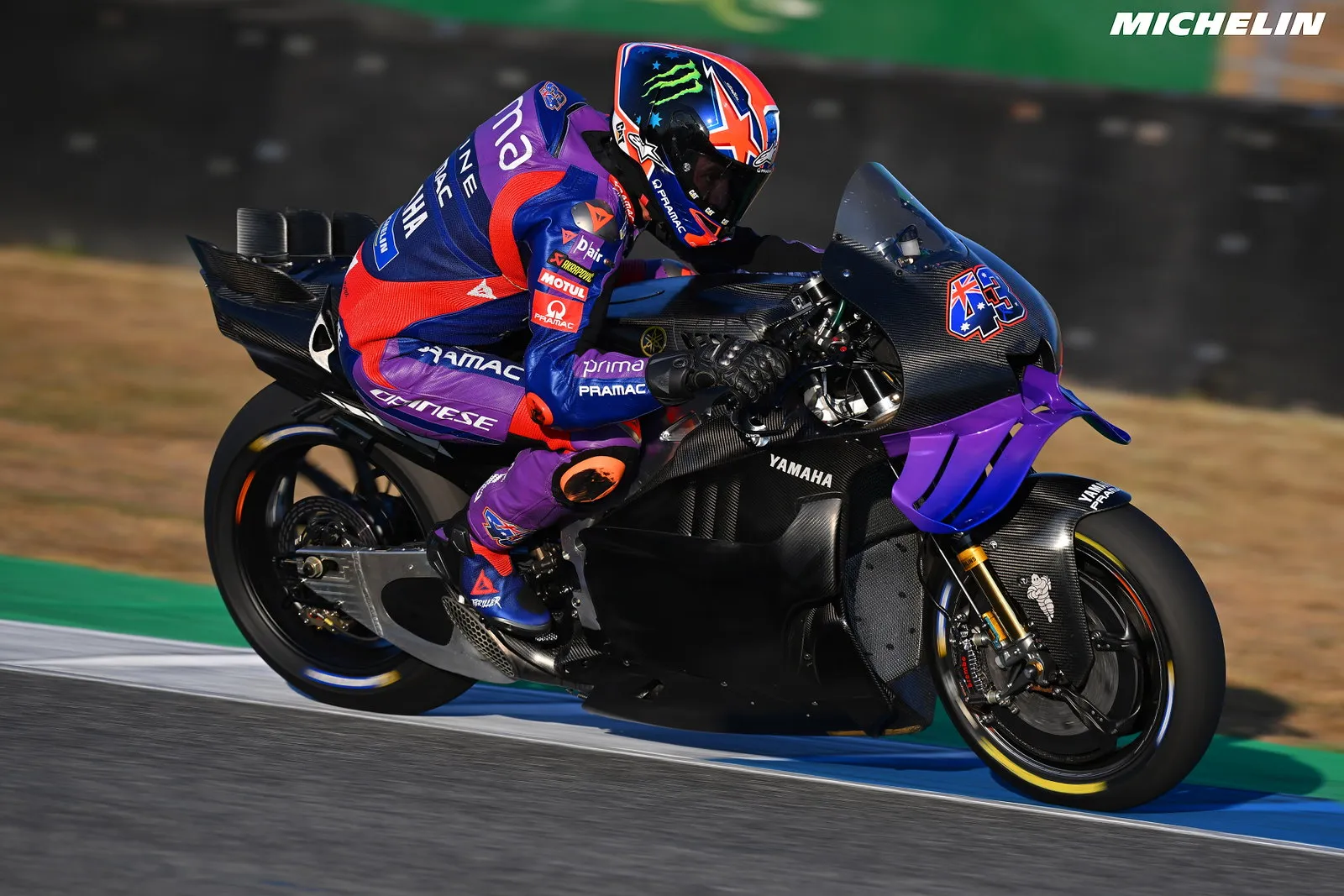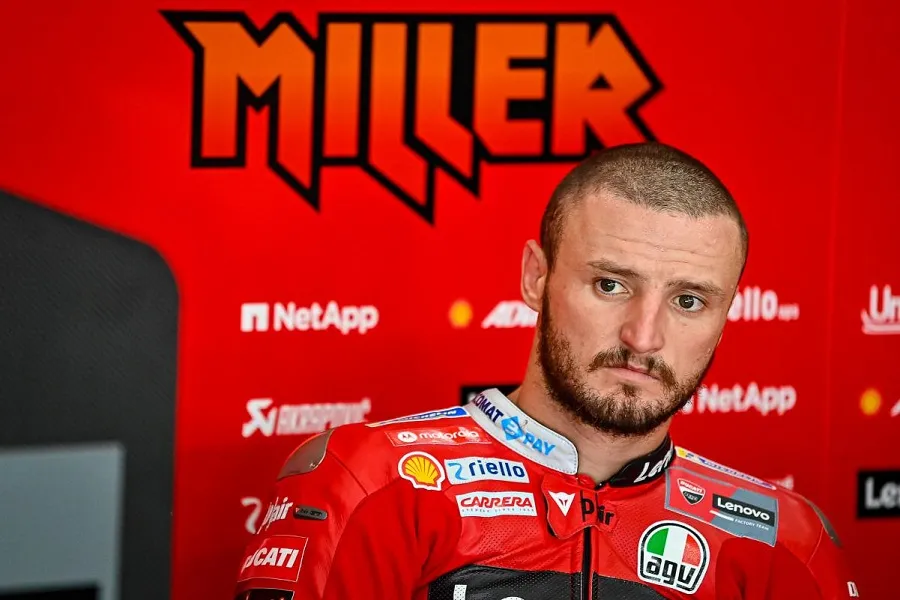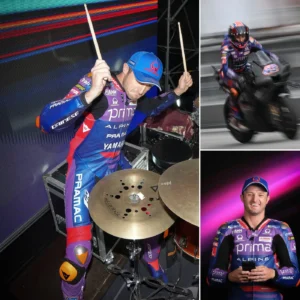Big Surprise: Jack Miller admits He’s Having Trouble Adapting to Yamaha, and Fabio Quartararo Is Trying to Bring Him Down.

In the high-octane world of MotoGP, rivalries are the lifeblood of the sport. The fierce competition between riders often results in intense on-track battles, thrilling performances, and, at times, drama off the track. The 2025 season has not been short of surprises, and the latest revelation has stunned fans and pundits alike. Jack Miller, the Australian rider who recently made the switch to Yamaha, has openly admitted that he’s having significant trouble adapting to his new bike. To make matters even more dramatic, Miller has hinted that his former teammate, Fabio Quartararo, is trying to bring him down in a behind-the-scenes power struggle.
In this article, we will delve into Miller’s struggles with Yamaha, the alleged tension between him and Quartararo, and what this means for the future of both riders and Yamaha in MotoGP. We’ll also explore the broader dynamics of rider-team relationships in the world of professional racing.
Jack Miller’s Move to Yamaha: A Bold Step or a Risky Gamble?
Jack Miller’s move from Ducati to Yamaha in 2025 was one of the most talked-about transitions of the season. After several years of impressive performances with Ducati, including multiple podiums and a career-defining win, Miller made the decision to change teams, seeking new challenges and a fresh start with Yamaha. At the time, many saw the switch as a chance for Miller to prove his versatility by adapting to a different bike—one that has historically been more challenging for some riders to master.
Miller, known for his aggressive riding style and his ability to handle power-packed bikes, faced the prospect of riding a Yamaha that is often considered more difficult to tame. Yamaha has been known for its more neutral handling and strong cornering capabilities, but it has struggled to match the raw power and top speed of competitors like Ducati and KTM. It was clear that Miller would need to adjust his riding technique to get the best out of the Yamaha, and fans eagerly awaited to see how he would adapt.
However, just a few months into the 2025 season, Miller has made a startling confession—he’s finding it tough to adapt to the Yamaha. Despite his experience and proven talent, he has struggled to find a comfortable rhythm on the bike, often feeling like he’s battling against the machine rather than working in unison with it. Miller himself admitted that the switch to Yamaha has been more difficult than he initially anticipated.
Miller’s Struggles with the Yamaha: What’s Going Wrong?
Miller’s difficulties in adapting to Yamaha have raised several questions among fans and analysts. The Australian rider has a reputation for being able to adapt to different machines over his career, but the Yamaha seems to present a unique set of challenges.
-
The Yamaha’s Unique Handling: One of the main difficulties Miller has faced is the Yamaha’s more “neutral” handling compared to Ducati’s aggressive cornering and acceleration characteristics. The Yamaha is known for being more stable through corners, but it lacks the explosive speed that Ducati riders often rely on to dominate straights. Miller’s aggressive riding style, honed on bikes with more power and corner-exit speed, has struggled to gel with the Yamaha’s more refined, balanced nature. Adapting his approach to suit the Yamaha’s subtler handling is proving to be a work in progress.
-
Tuning and Setup Challenges: Another factor contributing to Miller’s challenges is the complexity of tuning and adjusting the Yamaha’s setup. Yamaha’s engineers and riders have often praised the bike’s ability to perform once it is dialed in perfectly, but finding that perfect setup is easier said than done. As Miller tries to adjust his riding style to the bike’s needs, the setup choices and adjustments may not be as straightforward as they were with Ducati. Inconsistent results in early races have made it clear that Miller hasn’t yet found his ideal configuration, which has added to his frustration.
-
Communication with Yamaha’s Engineers: While Miller’s past experiences have given him a solid foundation to build on with Yamaha’s engineers, there have been reports of some communication struggles between him and the team. Having spent so many years at Ducati, where the team’s approach and philosophy are different, adapting to Yamaha’s methods of development and engineering could be a hurdle for Miller. Effective communication is key in finding the right setup and understanding how to extract the maximum performance from the bike, and it seems that Miller’s adjustment process is taking longer than expected.
The Quartararo Factor: A Behind-the-Scenes Rivalry?

As if Miller’s challenges weren’t enough, a more alarming revelation has surfaced regarding his relationship with Yamaha teammate Fabio Quartararo. The French rider, once seen as Yamaha’s golden boy, has reportedly been less than supportive of Miller’s transition. According to sources within the Yamaha camp, Quartararo has not only been critical of Miller’s performance but has also been subtly working to undermine his position within the team.
The tension between the two riders is not new. In the past, there has been speculation about competition within the Yamaha garage, with both riders vying for the number one spot. Quartararo, who has enjoyed significant success with Yamaha in recent years, is undoubtedly the team’s current leader. However, his dominance has been challenged by the arrival of a rider with the pedigree and experience of Miller.
Quartararo’s alleged attempts to bring Miller down could be a result of perceived threats to his position. While it’s not uncommon for riders to engage in a bit of mental warfare and competitive rivalry, Quartararo’s reported actions are raising eyebrows. Reports suggest that Quartararo has been pushing for specific adjustments to the bike that would suit his own riding style, which may inadvertently affect Miller’s ability to adapt to the Yamaha. Additionally, some insiders claim that Quartararo has made disparaging comments about Miller’s ability to handle the Yamaha, further intensifying the tension between the two riders.
Miller, on the other hand, has remained mostly professional, though it’s clear that the rivalry with Quartararo is adding an extra layer of difficulty to his already challenging transition. Instead of focusing purely on the bike and team development, Miller is now finding himself tangled in interpersonal dynamics that are far from ideal in a sport that demands focus and precision.
What Does This Mean for Yamaha?
The situation surrounding Miller’s struggles and the underlying tension with Quartararo has the potential to destabilize Yamaha’s MotoGP program. Yamaha has long prided itself on having a strong rider line-up, and having two talented riders like Quartararo and Miller is a fantastic asset. However, when these riders are not in sync or when internal rivalry begins to boil over, it can hurt team performance.

-
Team Dynamics and Development: Yamaha needs both of their riders to work together in harmony to continue improving their bike. If the rivalry between Miller and Quartararo continues to grow, it could result in fragmented efforts during development sessions, leading to slower progress in refining the Yamaha. For Yamaha to continue competing at the highest level, they need both riders to work as a cohesive unit, exchanging valuable feedback that will drive the bike forward.
-
Pressure on Team Management: Yamaha’s management must find a way to address the internal rivalry between their two top riders. While healthy competition is a natural part of motorsport, when it spills over into the garage, it can create tension that hampers overall performance. The team must manage both riders carefully to ensure that they remain focused on the goal: winning races and developing a competitive bike.
-
The Future of the Yamaha Project: With both riders having the potential to lead Yamaha to success, the team needs to consider how they can unlock the full potential of Miller and Quartararo. Miller’s frustration with adapting to the bike must be addressed, while Quartararo’s perceived undermining of Miller must be resolved to prevent it from undermining team cohesion. If Yamaha can strike the right balance, they could have a potent force in MotoGP for years to come.
Conclusion: What’s Next for Jack Miller and Yamaha?
Jack Miller’s struggles with adapting to Yamaha and the alleged tensions with Fabio Quartararo have certainly shaken the foundations of Yamaha’s 2025 MotoGP campaign. As the season progresses, the team will need to find ways to smooth over internal conflicts and help Miller adapt to the Yamaha in a way that maximizes his potential. Quartararo, too, will need to find a balance between healthy competition and team unity to ensure that Yamaha can continue to push for victories.
For Miller, the road ahead is challenging, but it’s not impossible. With the right support, he can overcome the difficulties he’s facing and adapt to Yamaha’s unique characteristics. However, the pressure to perform is mounting, and the drama surrounding his relationship with Quartararo could complicate matters further.
Only time will tell how this story unfolds, but one thing is for certain: the 2025 MotoGP season just got a lot more intriguing.







